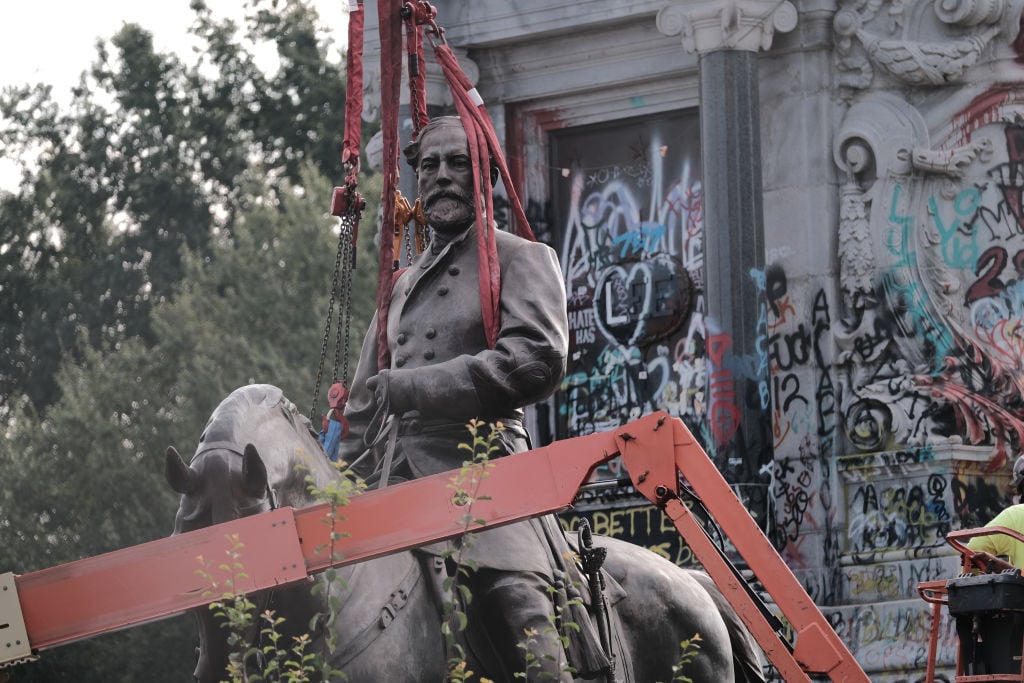
A 21-foot-tall monument to Confederate General Robert E. Lee in Richmond, Virginia, which was finally removed after a barrage of protests last fall, is now likely headed to the city’s Black History Museum.
Virginia Governor Ralph Northam and Richmond Mayor Levar Stoney announced the proposal last week, pending approval from the city council.
Should the plan proceed, the monument, along with its 40-foot pedestal and eight other Confederate statues removed from the capital city, will be transferred to the Black History Museum and Cultural Center of Virginia.
Administrators at the Valentine, the city’s oldest museum, which is dedicated to preserving and interpreting Richmond’s history, will aid decision-makers in determining the long-term fate of the objects.
“Entrusting the future of these monuments and pedestals to two of our most respected institutions is the right thing to do,” Stoney said in a statement, according to the Associated Press.
The mayor added that he will seek the city council’s approval this month.
Crews remove a statue of Confederate General Robert E. Lee on Monument Avenue, September 8, 2021 in Richmond, Virginia. Photo : Steve Helber – Pool/Getty Images.
Northam announced his intention to take down the 130-year-old bronze statue of Lee in June 2020, but was barred by a circuit court judge after a lawsuit was filed citing a 1890 deed declaring that Virginia had agreed to “faithfully guard” and “affectionately protect” the object and the ground on which it stood.
Litigation kept the statue in place until last September, when a final ruling from the state supreme court granted the governor power to remove it. Work to deconstruct the pedestal began in December.
Underneath the pedestal, preservationists found a 134-year-old time capsule yielding books, coins, newspapers, and other 17th-century items.
Mayor Stoney ordered the removal of Richmond’s other Confederate monuments in summer 2020 amid nationwide protests after the police killings of George Floyd and Breonna Taylor.
Since being dismantled, the statues have remained in storage at various locations in Richmond, including, for an unspecified period of time, inside the city’s wastewater plant.
“Symbols matter, and for too long, Virginia’s most prominent symbols celebrated our country’s tragic division and the side that fought to keep alive the institution of slavery by any means possible,” Northam told NPR last week.
“Now it will be up to our thoughtful museums, informed by the people of Virginia, to determine the future of these artifacts.”